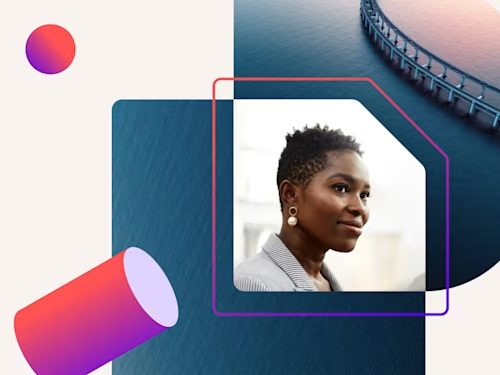
3 Lessons Learned to Improve Government Workflows
Learn how you can build a successful approach to digital transformation by including people, process and technology.

Many local, state and federal governments are transitioning to modern processes, including shifting from hardcopy documentation to electronic signature and digital contract processes. Those who’ve made the switch are observing a number of benefits, ranging from time and cost savings to greater satisfaction among both workers and constituents.
We spoke with Shonte Eldridge and Fred Butler Jr. who serve as Docusign’s senior authorities on government strategy and solutions, on what public sector leaders can learn from other government agencies who are leading the way in digital transformation. Eldridge and Butler both have decades of experience working in the public sector and leading large digital transformations for local, state and federal agencies.
The most successful approach to transformation is one that includes people, process and technology. To ensure success – and to avoid the mistakes of other leaders – consider the following recommendations.
1. Include employees in the workflow transformation process
Government leaders who don’t involve workers in workflow transformation efforts risk having the new process rejected by the very people that need to implement it.
A lack of preparation from the top dovetails into weakened morale, confusion and frustration among employees. They often wonder whether the “latest and greatest” technology is here to stay, or just another passing trend, and are hesitant to embrace new systems without proper training and guidance. Employees might also feel trapped in a revolving door of new technologies that yield little progress.
“Sometimes you have leaders who just want that shiny new object and aren’t thinking about the long-term objectives,” Eldrige said. “Employees get frustrated with leaders who constantly implement new technologies without considering their needs.”
Technology-related discord among governmental employees can also exacerbate strife amid the great resignation, when record numbers of people are quitting their jobs. And when it comes to attracting new talent, governments reluctant to go digital have been disadvantaged by competing employers who can onboard candidates faster with modern technologies.
“Even prior to COVID, the great resignation’s effect has been profound,” Butler Jr. said. “With the addition of COVID, all types of employers including the largest employer, the federal government, are competing for those candidates that have chosen to remain in the workforce.
2. Adjust to new expectations with the right technology
Today’s time-crunched constituents have become accustomed to fast service. As expectations continue rising for real-time service, governmental leaders are being tasked with meeting that demand with the same ease of placing an online order.
The trouble is, many governments lack the business processes, workflows and technology necessary to facilitate real-time results.
“Due to the digital advances over the last few years in the private sector, governments are being asked to do more”, said Eldridge. Implementing modern technology and workflows are the only way leaders are going to meet that demand.
The challenge isn’t limited to external constituents. Governmental employees also seek to work with processes that make it easier and faster to get their work done.
“The great thing about their expectation is that it is entirely within reach if they plan proactively and commit to processes that continue to engage across the organization,” Butler Jr. said. “They want to save time, decrease error and necessity to do re-work, maintain employee confidence and satisfaction in how systems are managed/executed.”
Prioritizations vary by organizations, available funding, and leadership commitment. In general, governments are often prioritizing areas where efficiencies are crucial. They’re examining processes that could cost a life if inefficient.
3. Have a modernization plan
Many governmental leaders recognize that in order to meet the demand for better service, they must embrace modern technologies. However many rush to implement solutions that aren’t compatible with their existing software, are troublesome to use, or do not meet their agency and constituent needs.
“Government leaders need to identify workflow problems, develop a plan of action, and secure buy-in before they implement new technology.” said Eldridge. “Doing so not only minimizes risk, but increases their ability to implement technology that meets their goals and expectations.
As detailed in the Docusign checklist, How to Make Your Case for a New Government Workflow Solution, leaders can facilitate a smooth technology rollout with the right approach. They should begin by identifying top priorities, and creating a plan to address those concerns. With those things in place, they can then explain the tangible benefits to employees and create excitement about the benefits that accompany a properly executed digital switch.
**“**Embrace new technologies,” said Butler Jr. “At the end of the day, it is one of the best ways to simplify how you do business so you can focus on impactful and meaningful work that drives your mission.”
Contact us to discover how our process and workflow solutions can help your agency meet its modernization needs.
Discover what's new with Docusign IAM or start with eSignature for free


